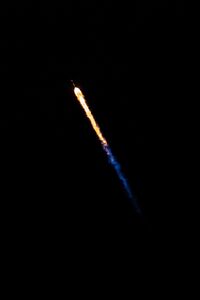Project Orbit Horizon

| ||||
| Nation: | ||||
| Company: | Great Southern Utilities | |||
| Purpose: | Civilian & military satellite services | |||
| Founded: | 1699 | |||
Project Orbit Horizon is a civilian rocket and satellite program owned and operated by Great Southern Utilities. The primary purpose of the program is to provide cutting edge television, internet, GPS navigation and telephone services to the population of the South Sea Islands, with the stated goal of providing cover to 100% of the nation's population by 1705. In addition to its civilian purpose, the program has also been contacted by the South Sea Islands Defence Force to provide military surveillance, communication, guidance and targeting capabilities.
History
The sparse and and disparate population of the South Sea Islands has historically posed challenges for service providers, with small scattered villages separated by rough and mountainous terrain being difficult to serve using traditional terrestrial television and mobile phone mast technology. For that reason, in 1695, the decision was taken to develop domestic rocket and satellite capabilities within the country.
The Government of the South Sea Islands strongly encouraged this development and was an early investor in the program, although the majority of funding would ultimately come from private investors.
Following several test launches, and drawing extensively on existing technology, the first satellite was successfully launched and placed into orbit in 1699. By that time, a permanent launch site had been established at South Seas International Airport in Zuid-Richel.
Difficulties
Owing to the extreme southern longitude of the South Sea Islands, particularly large rockets needed to be developed to successfully launch satellites into orbit. Whereas equatorial launches can rely on a "slingshot" effect from Micras' orbit to help them reach escape velocity, the effect of the spin is much less at extreme southern and extreme northern longitudes.
A longer burn time for the rocket motors was therefore required to reach escape velocity, and inevitably this meant larger fuel tanks and bigger, heavier rockets. These difficulties meant that many existing rocket types were not suitable for use in the South Sea Islands, and bespoke rockets had to be created.
Initial success
In August 1699 the first communications satellite, nicknamed Paper Cup 2 while the launch site was nicknamed Paper Cup 1, was successfully placed into orbit above Grand Wulfram Island. The success was confirmed by an automatic broadcast sequence, whereby Rick Astley's "Never gonna give you up" was broadcast in crystal clear ultra high definition onto the screens of mission control, via the newly established mobile internet connection.
Future plans
Following the successful launch of Paper Cup 2, plans were put in place to establish a network of between 80 and 100 satellites, providing services across the South Sea Islands, the surrounding oceans, Corum and the southern ice cap.
In the two years following the first successful launch, 30 more followed, each placing at least three satellites into orbit. At the time of writing, the exact number of operational satellites is considered classified.